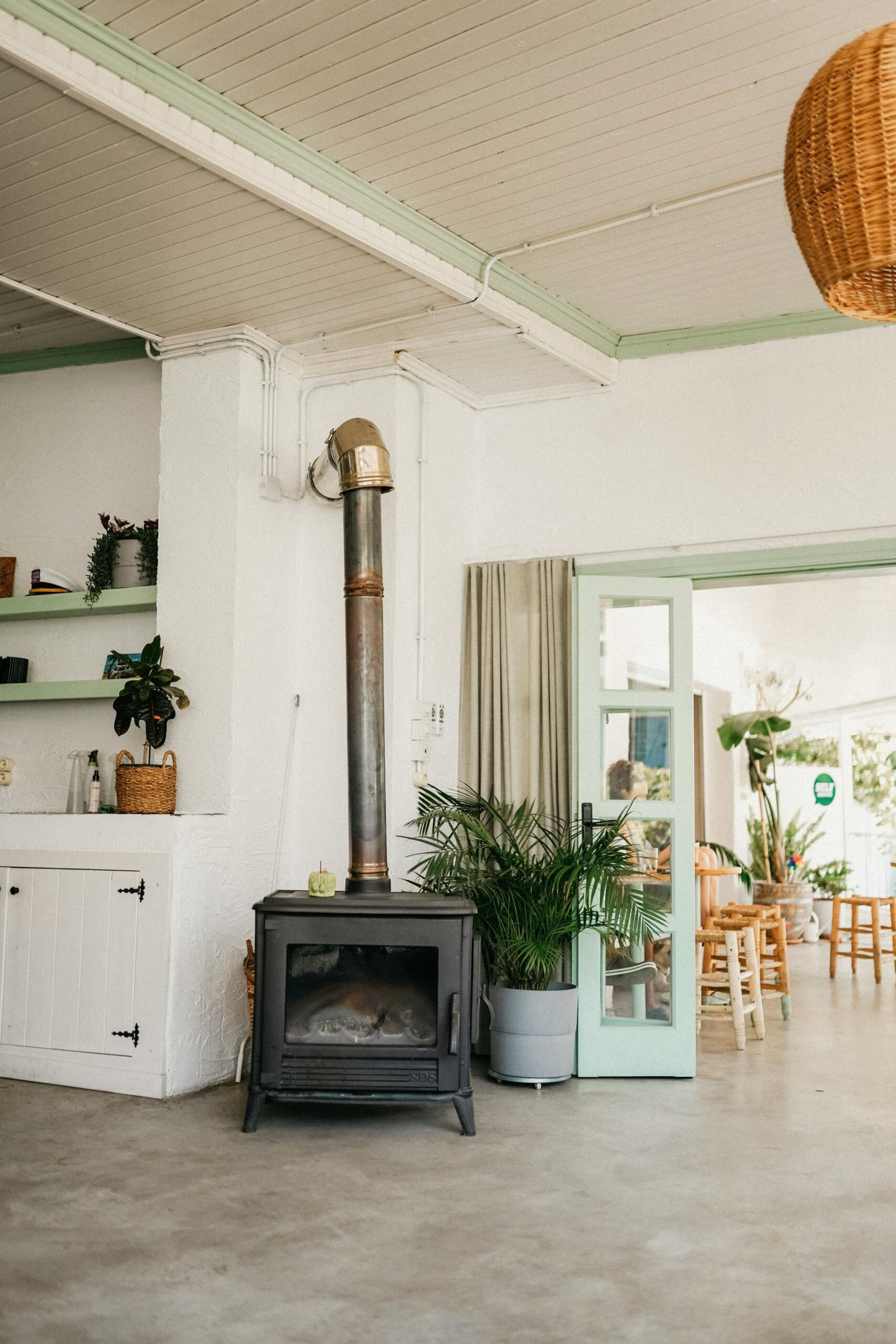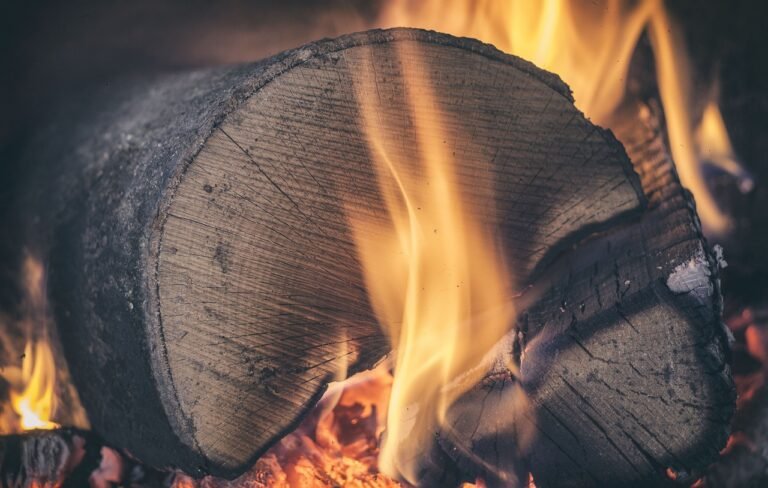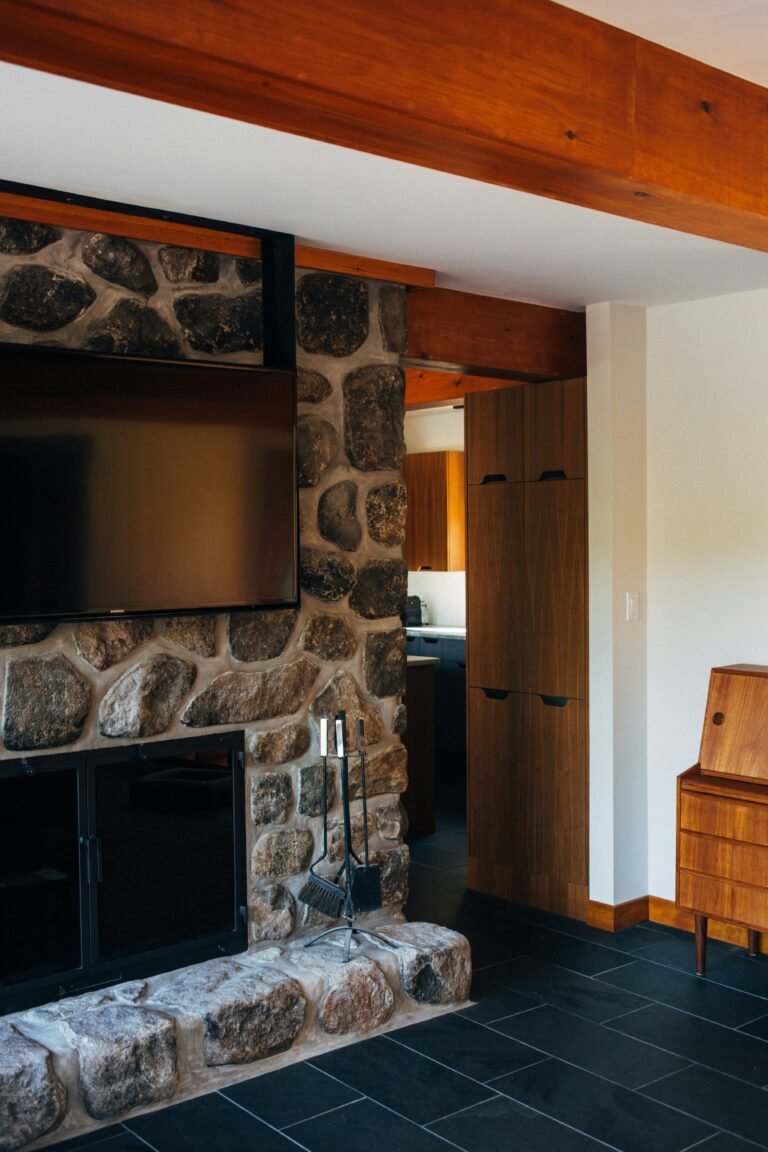Maintaining a safe and cozy home environment is of utmost importance, and nothing says warmth and comfort like a crackling fireplace. However, in order to fully enjoy the benefits of a fireplace, it is crucial to prioritize safety and practice regular maintenance. From inspecting the chimney to cleaning the firebox, this article will provide you with essential tips and guidelines to ensure the safety and efficiency of your fireplace. Discover how to maintain the heart of your home without compromising on safety.
Buy Fireplace Maintenance Guide
Inspecting the Fireplace
When it comes to fireplace maintenance, the first step is to thoroughly inspect the fireplace for any cracks or damage. Cracks in the fireplace can compromise its structural integrity and pose a safety hazard. Carefully examine the entire surface of the fireplace, including the hearth, mantle, and surround, for any signs of damage. Look for cracks, chips, or loose bricks that need to be repaired. If you notice any cracks or damage, it is crucial to address them promptly to ensure the safety of your home.
After inspecting the fireplace for cracks or damage, it is essential to clear out any debris that may have accumulated. Remove any ashes, soot, or other debris that may be present in the firebox. Use a small shovel or a vacuum specifically designed for fireplace use to safely remove the ashes. Be sure to dispose of the ashes properly, as they can still be hot and potentially ignite if not handled correctly. By clearing out debris from the fireplace, you maintain a clean and safe environment for future use.
Another crucial aspect of fireplace maintenance is examining the chimney. Inspect the exterior of the chimney for any cracks or signs of deterioration. Pay attention to the chimney cap and ensure that it is intact and properly fitted. A damaged chimney cap can allow water, debris, or animals to enter the chimney, potentially causing further damage. Additionally, examine the chimney flue to ensure it is clean and free of any blockages. Regularly inspecting the chimney helps prevent its deterioration and ensures proper ventilation for your fireplace.
Cleaning the Fireplace
To maintain a safe and efficient fireplace, regular cleaning is a must. Start by removing ashes and soot from the firebox. Use a fireplace shovel or a handheld vacuum to carefully scoop out the ashes. Make sure the ashes are completely cool before disposing of them in a metal container. Ashes are an excellent addition to compost or can be sprinkled around plants as a natural source of nutrients.
Sweeping the chimney is another essential part of fireplace cleaning. Over time, creosote, a black, tar-like substance, can accumulate in the chimney flue. This highly flammable substance poses a significant fire hazard. Hiring a professional chimney sweep to annually clean and inspect your chimney is highly recommended. They have the expertise and proper tools to thoroughly clean the chimney, ensuring optimal performance and reducing the risk of a chimney fire.
Additionally, don’t forget to clean the firebox itself. Use a brush or vacuum specifically designed for fireplace cleaning to remove any remaining debris or loose soot. Regularly cleaning the firebox helps maintain a clean, efficient, and safe environment for your fires.
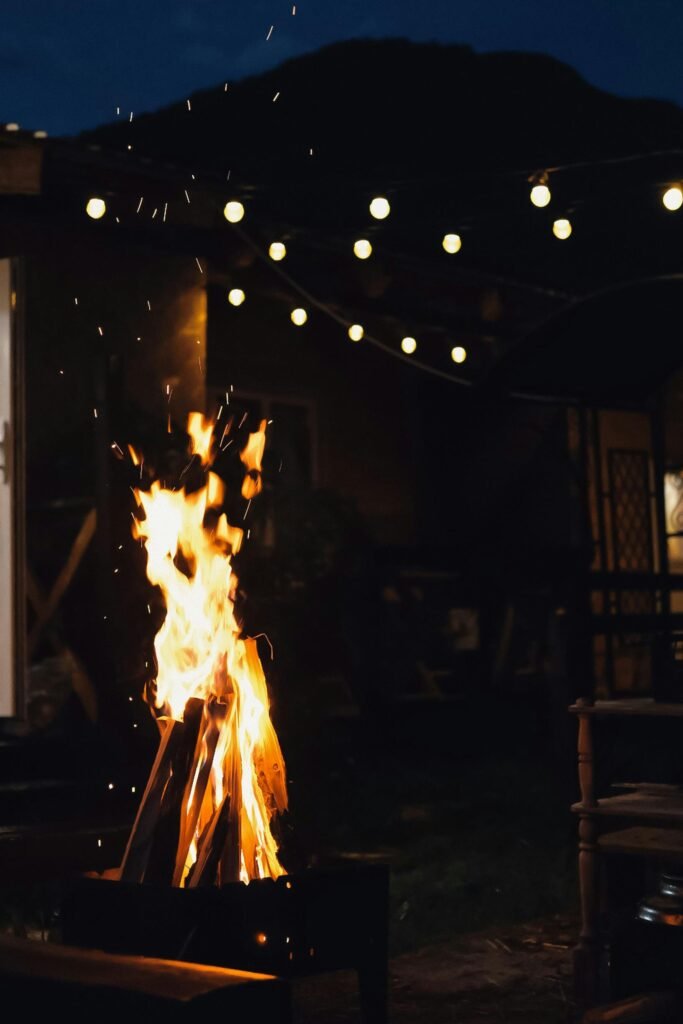
This image is property of images.pexels.com.
Get Your Fireplace Maintenance Checklist
Maintaining Proper Ventilation
Proper ventilation is vital to ensure the safe operation of your fireplace. The damper plays a crucial role in regulating airflow and venting smoke out of the house. Regularly open and close the damper to ensure it is functioning correctly. A properly working damper allows for efficient combustion and helps prevent smoke from entering your living space.
Blockages in the chimney can also obstruct ventilation and create safety hazards. During your regular chimney inspection, check for any blockages such as bird nests, leaves, or other debris. If you notice any blockages, it is crucial to remove them promptly before using your fireplace. A blocked chimney can prevent the safe escape of smoke and gases, increasing the risk of carbon monoxide poisoning or chimney fires.
Installing carbon monoxide detectors near your fireplace and throughout your home is an essential safety precaution. Carbon monoxide is a colorless, odorless gas that can be produced during the burning of fuels. It can be extremely dangerous and even fatal if inhaled in high concentrations. Carbon monoxide detectors can provide early warning signs of a potential leak, allowing you to take immediate action and protect yourself and your family.
Ensuring Safe Fuel Usage
Choosing the right firewood is essential for both safety and efficiency. Opt for hardwoods like oak, maple, or birch, as they burn longer and produce less creosote. Avoid using softwoods or treated wood as they can create excessive creosote buildup and release harmful chemicals when burned. Additionally, ensure that the firewood is properly seasoned, meaning it has been dried for at least six months. Properly seasoned firewood burns more efficiently and produces less smoke.
Storing fuel appropriately is another critical aspect of fireplace maintenance. Keep firewood stored in a dry, well-ventilated area away from the house. Moisture can cause the wood to rot and produce less heat while also attracting pests. It is also essential to keep a safe distance between the stored firewood and your home to prevent any potential fire risks.
When enjoying a fire in your fireplace, it is crucial to be mindful of the surroundings and avoid using or storing flammable materials nearby. Keep curtains, furniture, and any other flammable objects a safe distance away from the fireplace. This precaution reduces the risk of accidental ignition and ensures a safe and enjoyable fire experience.
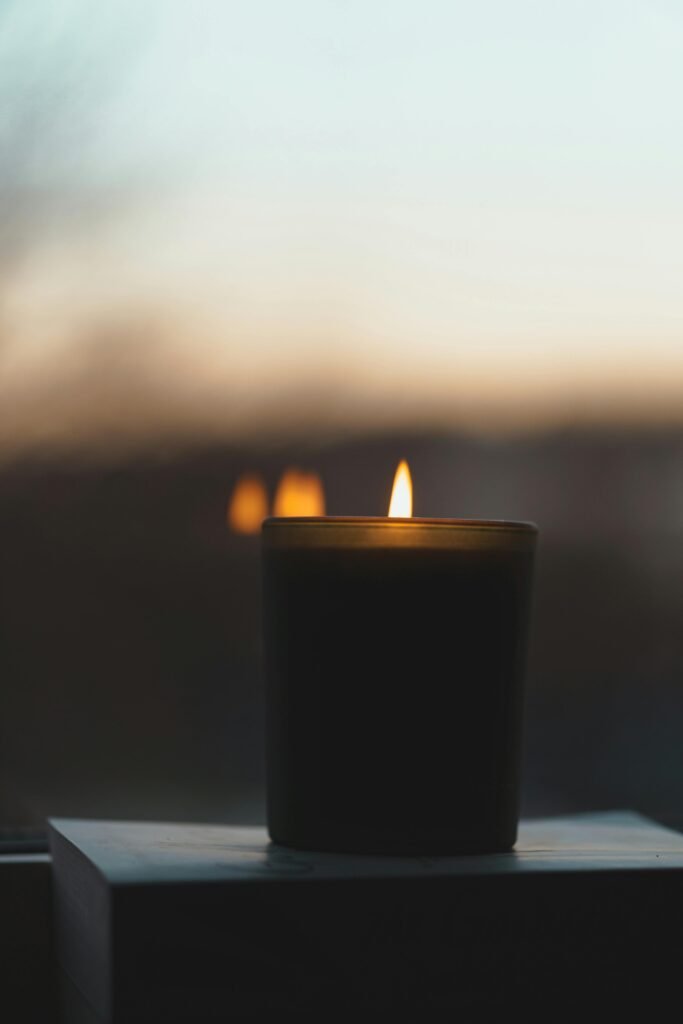
This image is property of images.pexels.com.
Using Protective Gear
Protecting yourself while operating a fireplace is of utmost importance. When handling ashes or tools, always wear thick gloves to prevent burns or cuts. Additionally, wearing goggles or safety glasses is highly recommended to protect your eyes from any flying debris or sparks. Taking these simple precautions significantly reduces the risk of injuries while maintaining your fireplace.
Using fireproof tools is essential to prevent accidental fires and ensure safe operation. A fireplace poker, shovel, and brush made from heat-resistant materials are necessary for managing and cleaning the fire. These tools are designed to withstand high temperatures and reduce the risk of burns or damage to the tools themselves.
Having a fire extinguisher readily available near the fireplace is a crucial safety measure. In case of a fire emergency, a fire extinguisher can quickly suppress the flames and prevent further damage. Make sure everyone in the household knows how to use the fire extinguisher correctly, and that it is regularly inspected and maintained according to the manufacturer’s instructions.
Practicing Safe Burning
To further enhance fireplace safety, use a fire screen or spark guard while the fire is burning. A fire screen acts as a barrier, preventing sparks or embers from escaping the firebox and causing accidental fires. It also adds an extra layer of protection, especially if you have young children or pets in your home. Keep the fire screen securely in place and ensure it covers the entire opening of the fireplace.
In addition to using a fire screen, be conscious of other flammable objects near the fireplace. Keep curtains, furniture, and decorations a safe distance away to minimize the risk of accidental ignition. By maintaining a clear space around the fireplace, you reduce the likelihood of a fire spreading beyond the firebox and potentially causing severe damage to your home.
While enjoying a fire, it is essential to actively monitor it. Never leave a fire unattended, especially if there are children or pets in the vicinity. Sparks or embers can escape the fireplace and ignite nearby objects within seconds. Stay alert and keep a close eye on the fire to ensure its safe operation throughout its duration.
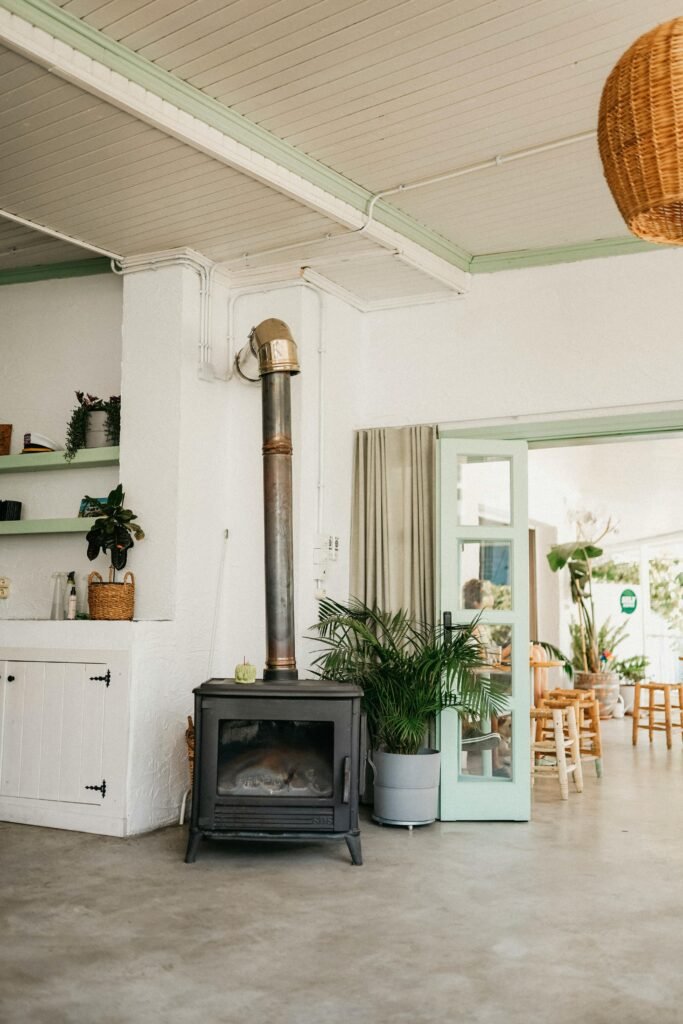
This image is property of images.pexels.com.
Regular Inspection and Maintenance
Even with diligent care, professional inspections are necessary to ensure the safety and efficiency of your fireplace. Schedule regular inspections with certified chimney sweeps to thoroughly assess the condition of your chimney and fireplace. They have the expertise to detect any hidden issues that may compromise the safety of your home. Professional inspections typically include cleaning the chimney, inspecting the flue, checking for cracks or damage, and testing the functionality of the damper.
During the inspection, pay special attention to the chimney cap and crown. The chimney cap covers the top of the chimney and helps prevent debris, water, and animals from entering. The crown, located at the very top of the chimney, provides an added layer of protection against water damage. Regularly maintaining the chimney cap and crown ensures proper ventilation and protects against costly repairs caused by water infiltration.
In case any component of your fireplace or chimney is damaged, it is crucial to promptly address the issue. Whether it’s a cracked firebox, a damaged damper, or a broken chimney liner, compromised components should be repaired or replaced by professionals. Continuing to use a fireplace with damaged parts increases the risk of fire, carbon monoxide poisoning, and structural damage to your home.
Educating Household Members
Ensuring the safety of everyone in your household requires proper education and awareness of fireplace safety practices. Teach children about the dangers of fire and establish clear fireplace safety rules. Explain the importance of keeping a safe distance from the fireplace and never touching the fire or its tools. Encourage them to notify an adult immediately if they notice any unsafe situations related to the fireplace.
Establishing fireplace rules for the entire household is essential to maintain a safe environment. Make sure everyone understands the rules and follows them consistently. These rules may include things like never leaving a fire unattended, using fire screens at all times, and keeping flammable materials away. By setting clear guidelines, you create a culture of safety and responsibility in your home.
Conduct regular training sessions on fire emergency procedures with every member of your household. Ensure that everyone knows the nearest exits, the designated meeting point outside, and how to call emergency services. Practice evacuation drills and discuss what to do in case of a fire or other emergencies related to the fireplace. By being well-prepared, you can minimize panic and ensure a swift response in challenging situations.
Emergency Preparedness
Having a well-defined fire escape plan is crucial in case of a fire emergency. Make sure everyone in your household knows the primary and secondary escape routes, which should be kept clear at all times. Practice the fire escape plan regularly, especially with children, to familiarize everyone with the procedures. Knowing how to quickly and safely evacuate your home can save lives in the event of a fire.
Different types of fires require different extinguishing methods. Ensure that everyone in your household is educated on the appropriate ways to extinguish different types of fires. For example, small fires in the firebox can often be safely extinguished by carefully placing a fireproof cover or using a fire extinguisher. However, never attempt to extinguish a larger chimney fire yourself, as it can be extremely dangerous. Instead, evacuate the house immediately and call the fire department.
Carbon monoxide is a silent killer, and understanding its symptoms is crucial for your safety. Educate yourself and your household members about the signs of carbon monoxide poisoning, such as headaches, nausea, dizziness, confusion, and flu-like symptoms. If you suspect a leak or experience these symptoms while using the fireplace, evacuate the house immediately and seek medical attention. Carbon monoxide detectors can also provide an early warning sign of a potential leak, allowing you to act swiftly and prevent any harm.
Consulting Professionals
While regular maintenance and inspections are essential, don’t hesitate to seek professional help for fireplace-related needs. Hiring certified chimney sweeps ensures that your chimney and fireplace receive expert care. They have the knowledge, training, and specialized tools to provide thorough inspections and cleanings, ensuring the safety and efficiency of your fireplace system.
If any repairs are necessary, it is essential to consult with professionals. Experts can assess the extent of the damage and provide appropriate solutions to restore your fireplace’s functionality and safety. Trying to fix or modify components without the proper knowledge can lead to further damage or pose additional risks. By enlisting the help of professionals, you can have peace of mind knowing that your fireplace is in expert hands.
Installing chimney liners is another area where professional advice should be sought. Chimney liners protect the chimney walls from heat, sparks, and corrosive byproducts of combustion. They also enhance ventilation and prevent the formation of dangerous creosote inside the chimney. Consult with professionals to evaluate whether your chimney requires a new liner or if the existing one needs repairs or replacement.
By following these comprehensive fireplace maintenance practices, you can ensure the safety and longevity of your fireplace system. Regular inspections, proper cleaning, and safe fuel usage are crucial for maintaining a healthy and efficient fireplace. Educating household members and being prepared for emergencies further enhances the safety of your home. Remember to consult professionals when needed to ensure the proper functioning of your fireplace and enjoy the warmth and coziness it brings with peace of mind.
